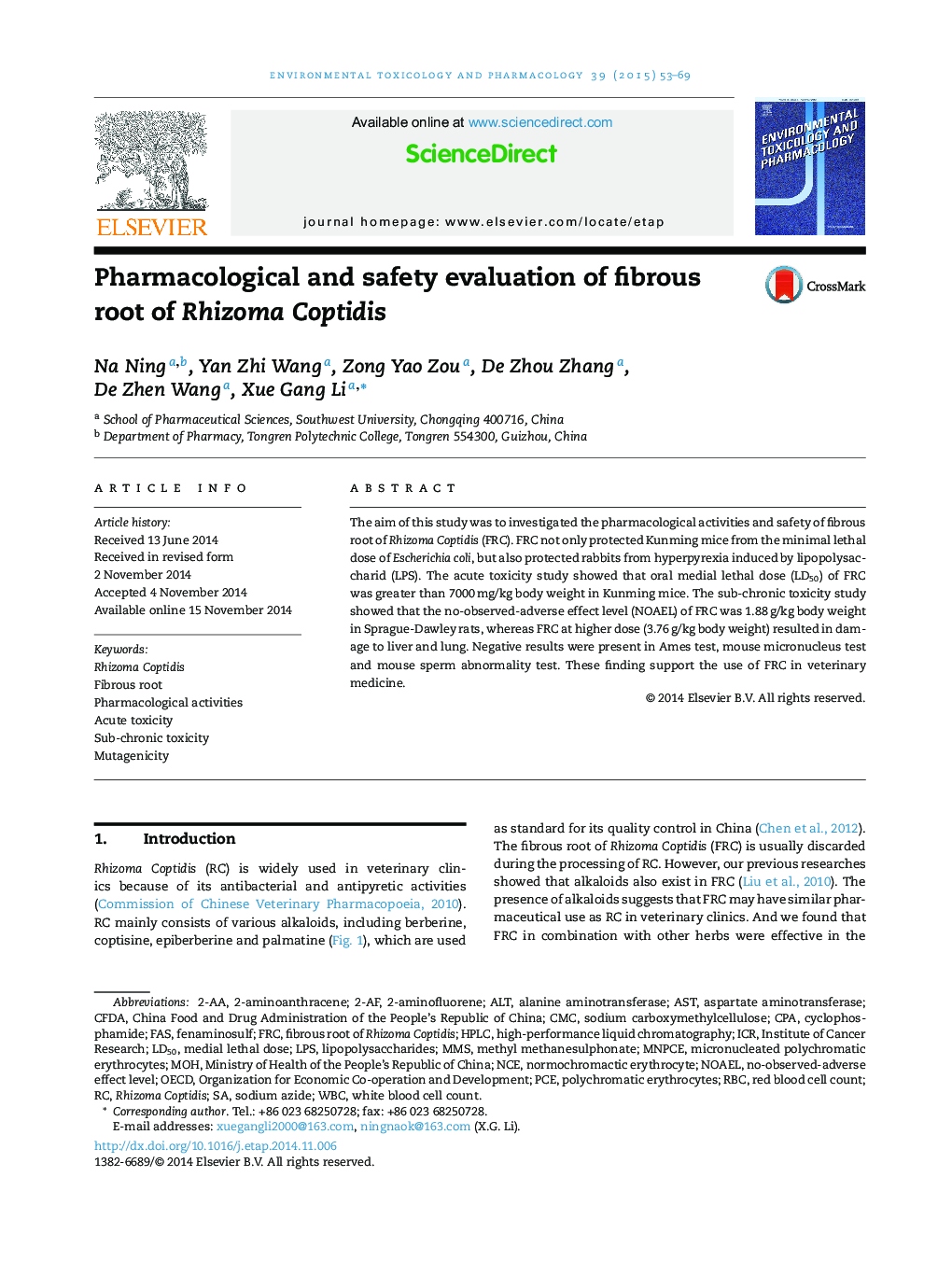| Article ID | Journal | Published Year | Pages | File Type |
|---|---|---|---|---|
| 2583267 | Environmental Toxicology and Pharmacology | 2015 | 17 Pages |
•Fibrous root of Rhizoma Coptidis is of antibacterial activity in Kunming mice.•Fibrous root of Rhizoma Coptidis is of antipyretic activity in rabbits.•Fibrous root of Rhizoma Coptidis is of no acute toxicity in Kunming mice.•Fibrous root of Rhizoma Coptidis at high dose leads to toxicity in SD rats.•Fibrous root of Rhizoma Coptidis is none of mutagenicity.
The aim of this study was to investigated the pharmacological activities and safety of fibrous root of Rhizoma Coptidis (FRC). FRC not only protected Kunming mice from the minimal lethal dose of Escherichia coli, but also protected rabbits from hyperpyrexia induced by lipopolysaccharid (LPS). The acute toxicity study showed that oral medial lethal dose (LD50) of FRC was greater than 7000 mg/kg body weight in Kunming mice. The sub-chronic toxicity study showed that the no-observed-adverse effect level (NOAEL) of FRC was 1.88 g/kg body weight in Sprague-Dawley rats, whereas FRC at higher dose (3.76 g/kg body weight) resulted in damage to liver and lung. Negative results were present in Ames test, mouse micronucleus test and mouse sperm abnormality test. These finding support the use of FRC in veterinary medicine.
Graphical abstractFigure optionsDownload full-size imageDownload as PowerPoint slide
